
How To Make A DIY CO₂ Generator For Your Cannabis Grow Room
Most growers always want new, exciting ways to increase their yields. That's what it's all about. Introducing extra CO₂ into your grow room can be a cheap and effective way to push your yields up by as much as 20%. However, this is only the case if other factors are also met. Read on to discover all you need to know about DIY CO₂ generators.
It’s common knowledge that plants breathe in carbon dioxide (CO₂) during the day, and respire oxygen. Cannabis plants are no exception, and a little CO₂ boost can go a long way to boosting your crop’s yield.
What Is a CO₂ Generator?
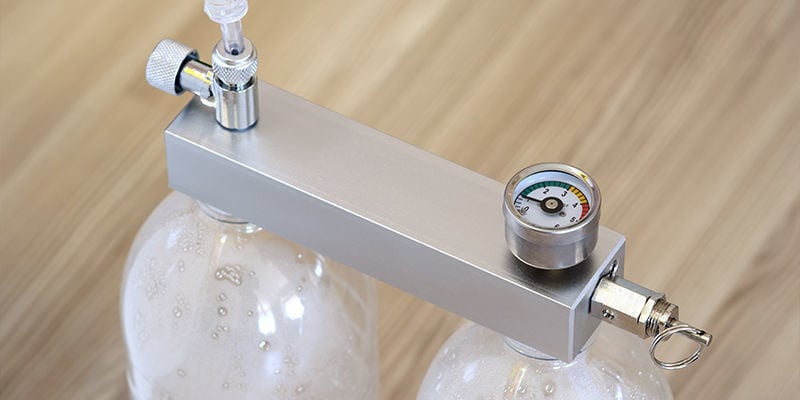
A CO₂ generator is, unsurprisingly, something that produces carbon dioxide. In an industrial grow, these can be expensive, high-tech pieces of equipment that pump out gallons of the stuff. However, there are much simpler (not to mention cheaper) methods available for the discreet, cheap, or hobbyist grow room.
Why Is Carbon Dioxide (CO₂) Important for Cannabis Plants?
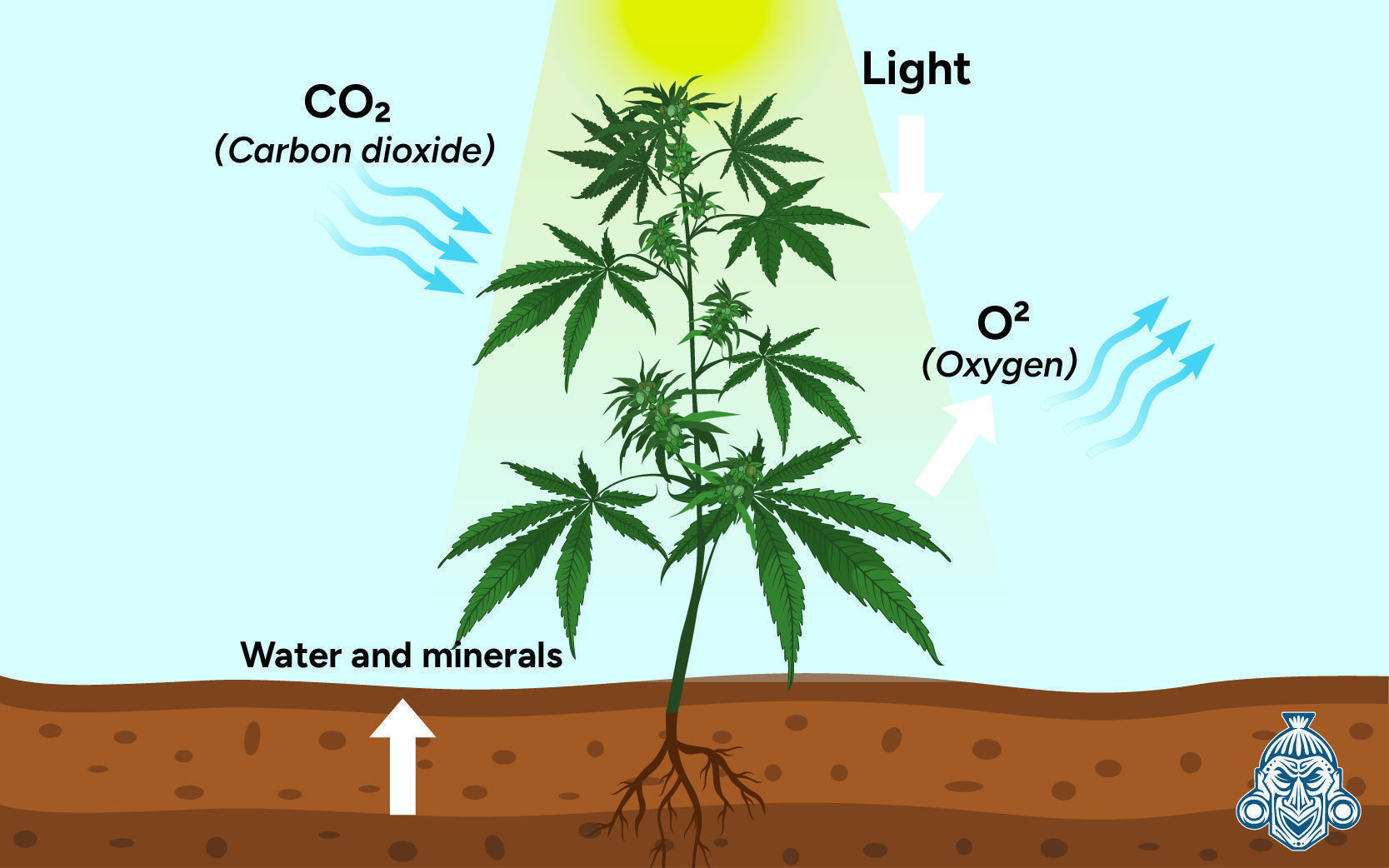
Carbon dioxide to cannabis is like oxygen to us. When they are photosynthesising, they are “breathing” in CO₂. When they stop, they switch to oxygen. And, just as we perform better in environments with suitable amounts of oxygen, so too do cannabis plants with adequate amounts of CO₂.
By essentially giving them more fuel, you allow them to grow faster and more vigorously, resulting in a bigger, quicker yield.
How To Make a DIY CO₂ Generator for Cannabis Plants

But, how do you do this in the home, you ask? Fortunately, there are many, very cheap ways to produce enough CO₂ ppm to slake your crop’s thirst!
CO₂ Generator With Yeast
The first method is harvesting the CO₂ produced naturally when yeast respires. Much as we breathe in oxygen and breathe out CO₂, so too does yeast. Growing some alongside your crop gives it a great boost.
Equipment
- 5-litre demijohn (a flask designed for fermentation, with a release valve to allow gas to escape)
- Warm water
- 1 tsp of dried active yeast or a couple of grams of baker’s yeast
- Cup of sugar
- 2 pureed tomatoes or equivalent source of nutrients
Instructions
- Fill your demijohn, leaving space at the top. Ideally, the water should be around 21°C; this is optimal for yeast growth. Go over 40°C, and it will die.
- Add sugar and tomato paste to the demijohn; allow it to dissolve.
- Add the yeast.
- Maintain a good temperature. Fortunately, a grow room should be at a good temperature for this process.
- After only a few hours, you should begin to see bubbles. This is the CO₂.
- Place the demijohn among your plants.
- Every week or two, pour off some of the solution and add fresh water and sugar. If you fail to do this, the solution will become too alcoholic and the yeast will die.
CO₂ Generator Using Vinegar and Baking Soda
Another method is to use vinegar and baking soda. Remember making volcanoes in school? Well, it was rapid CO₂ production that caused the eruption. If only the teachers knew they were preparing you to grow weed!
Unfortunately, this method is basically not as good as the yeast method. Nonetheless, we’ll go over it briefly. If you simply add vinegar to baking soda, you will get a massive release of CO₂ and that will be it. Not much use! In order to make this useful, you would need to create an apparatus that drips vinegar onto a tray of baking soda, creating a steady release of CO₂. As you can see, this method may be more effort than it's worth.
CO₂ Generator Using Mushrooms
We’ll address this nifty idea as it’s asked a lot on forums, and using a mushroom grow to feed your cannabis grow is certainly a fun idea. Plus, it uses CO₂, which would be produced anyway
However, it seems that the amount of mushrooms would need to be pretty serious to create enough CO₂ to make a significant difference. Also, as the humidity requirements of mushrooms and cannabis are different, they would need to be grown separately with a pump connecting them.
While perhaps not the best idea for a small-scale grow-op, if any large manufacturers of mushrooms and cannabis (or any other plants for that matter) are reading this, maybe syphoning off the CO₂ from your mushrooms would be an environmentally friendly, cheap alternative to boost your crop.
CO₂ Generator Using Dry Ice
It is generally believed that using dry ice could work, but it is not cost-efficient. As it is difficult to control levels, it would not be entirely reliable, and, as the amounts required are fairly constant, the costs could ramp up massively compared to other methods.
How Much CO₂ Do You Need To Grow Cannabis?
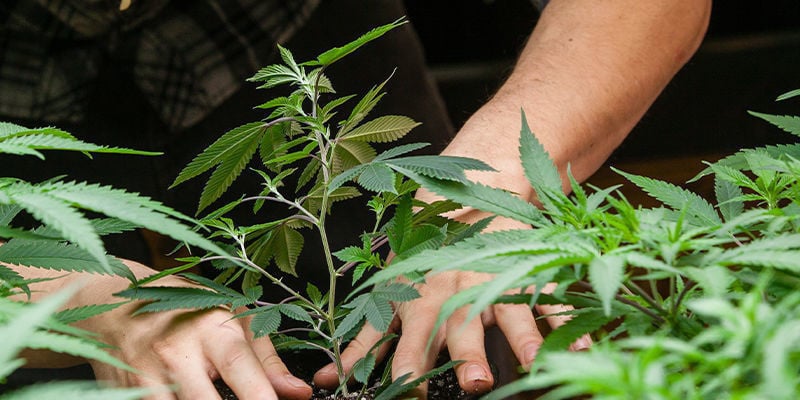
More CO₂ is not necessarily better. The first factor to take into account is your lighting setup. If you’re using low-power lights (CFLs), then it is likely your grow room will have enough CO₂ already. Extra CO₂ is only necessary when there is extra light. As CO₂ is used in photosynthesis, the extra light provided by high-power lights can only be properly used with extra CO₂.
Levels of CO₂ in the atmosphere sit at about 400ppm. Most plants can use CO₂ levels up to 1,500ppm—a big increase. This is the maximum level you want your CO₂ to sit at. Above this, it’s no use to your plants, and you will just incur extra costs.
Again, this upper limit is commensurate to the brightness of your lights, so adjust it accordingly. Although, if using a makeshift method, it is unlikely you will hit these upper limits anyway.
One important thing; CO₂ will increase the growth of your plants. As such, you will need to introduce more nutrients and be more hands-on with controlling their growth. If you do not adjust the amounts of nutrients properly, you can end up with underfed plants, which will inhibit the final yield. CO₂ is only useful if the crop is grown well.
Vegetative Stage
CO₂ is most useful in the vegetative stage, as this is when most of the growing takes place. So long as CO₂ is being produced during “daylight” hours, all will be well.
Flowering Stage
At this stage, it is unclear how beneficial CO₂ is. As a general rule, keeping your CO₂ generator going for one to two weeks into flowering is considered beneficial; after this, less so. Nevertheless, some claim it can be of use, and it should not do your plants any harm to continue producing it. The main thing to take into account is the cost–benefit analysis of extra CO₂ at this point.
CO₂ Generator vs Tank
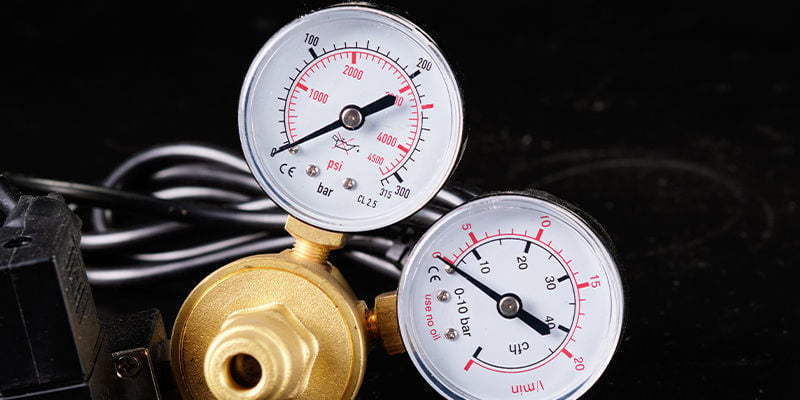
If you have a large space, large funds, and the capability to install a CO₂ tank properly, then it is undoubtedly a good option. However, if this is not the case, a DIY solution is likely to be better. These are cheaper (a lot cheaper) and much safer. The levels of CO₂ produced by a tank can be very dangerous if not properly installed.
More than anything, unless you’re growing a huge crop, a tank is likely to be so expensive that the whole project would become extortionate.
CO₂ Generator for Grow Tents: Top Tips
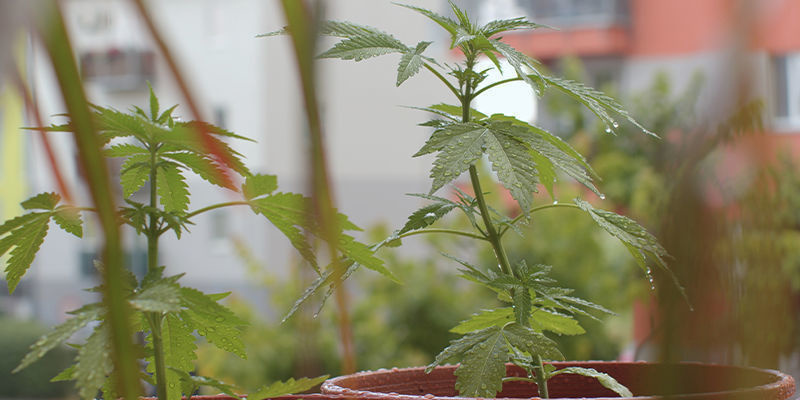
Below are a few extra tips for effectively using a CO₂ generator to get the most from your cannabis grow.
To Seal or Not To Seal?
If you’ve only got a small grow, an airtight seal is not likely to be of great benefit. While grows with up to 1,500ppm of CO₂ will benefit from being sealed (otherwise the leakage will become expensive), smaller grows will not encounter this. It is more difficult to keep a sealed grow room cool while at a low-enough humidity. Therefore, for a small operation, sealing it is likely to be more of a nuisance than a benefit.
CO₂ Rain
CO₂ sinks to the ground, but is absorbed through the leaves of your plants. If possible, place whatever is producing CO₂ above your plants so it sinks past their leaves. This will make uptake much more efficient.
Don’t Spend Too Much Time in Your Grow Room
This shouldn’t matter too much if you’re just using a DIY method. However, if CO₂ levels are higher, then oxygen levels will be lower. Just be aware of this, and if you begin to feel lightheaded, dizzy, or tired, step outside and breathe some fresh air before returning to your crop.
If used properly, CO₂ can increase yields by up to 20%. But, if the other factors aren’t there, it will be useless. So don’t throw in a generator assuming it’s a magic way to increase your final haul. Carefully assess whether your plants will benefit from added levels of carbon dioxide. If they will, fantastic. Pick the most appropriate method and watch those buds flourish.
-
 5 min
6 March 2025
Top 10 autoflowering cannabis strains
Explore the world of autoflowering cannabis strains with our selection of the top 10 available on the market right now. Perfect for novice and experienced growers alike, these plants offer a...
5 min
6 March 2025
Top 10 autoflowering cannabis strains
Explore the world of autoflowering cannabis strains with our selection of the top 10 available on the market right now. Perfect for novice and experienced growers alike, these plants offer a...
-
 6 min
17 February 2020
How To Grow Weed On A Budget Indoors And Outdoors
Your first cannabis grow doesn't have to break the bank. Cannabis can be grown cheaply and efficiently, giving you a good idea if the hobby is for you.
6 min
17 February 2020
How To Grow Weed On A Budget Indoors And Outdoors
Your first cannabis grow doesn't have to break the bank. Cannabis can be grown cheaply and efficiently, giving you a good idea if the hobby is for you.
-
 3 min
4 July 2016
How Solar-Panels Could Revolutionise Grow Rooms
Introducing solar panels into the indoor growing setup reduces energy consumption dramatically as well as the costly electrical bill.
3 min
4 July 2016
How Solar-Panels Could Revolutionise Grow Rooms
Introducing solar panels into the indoor growing setup reduces energy consumption dramatically as well as the costly electrical bill.
-
 2 min
30 November 2015
Growing Indoors Vs. Outdoors: The Pros And Cons
There are some significant differences between growing cannabis indoors and outdoors. Knowing them can help you decide which is best for you.
2 min
30 November 2015
Growing Indoors Vs. Outdoors: The Pros And Cons
There are some significant differences between growing cannabis indoors and outdoors. Knowing them can help you decide which is best for you.





 United States
United States











